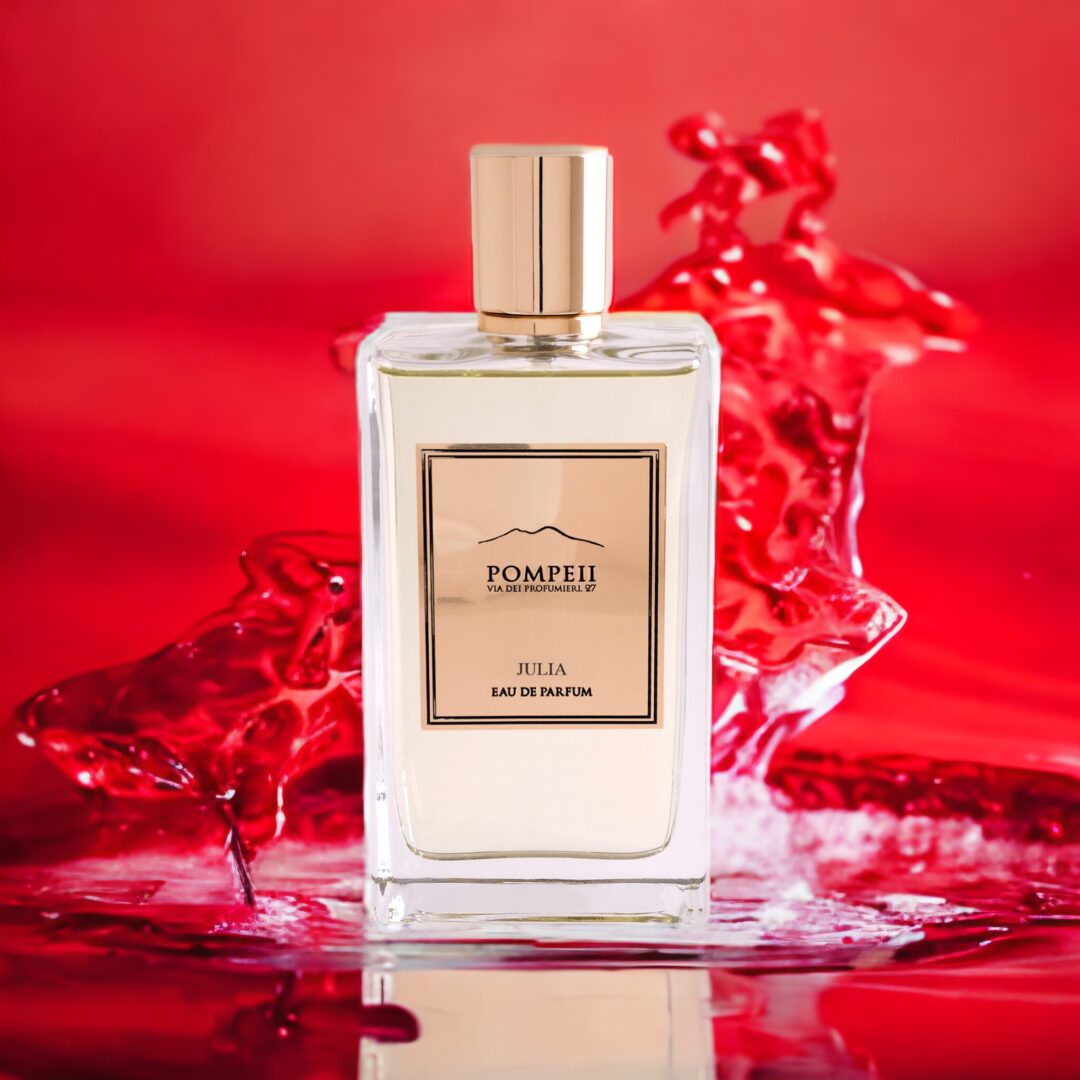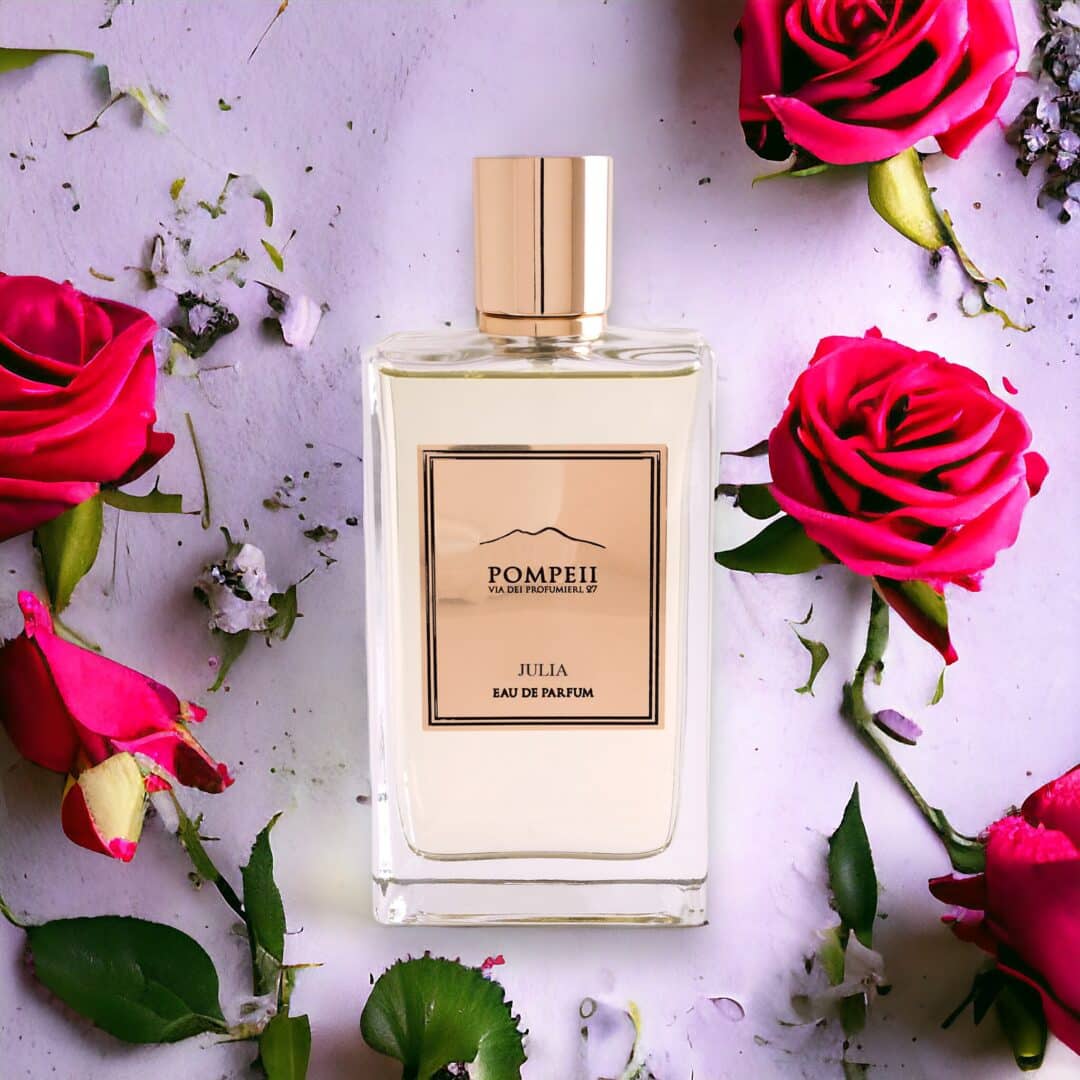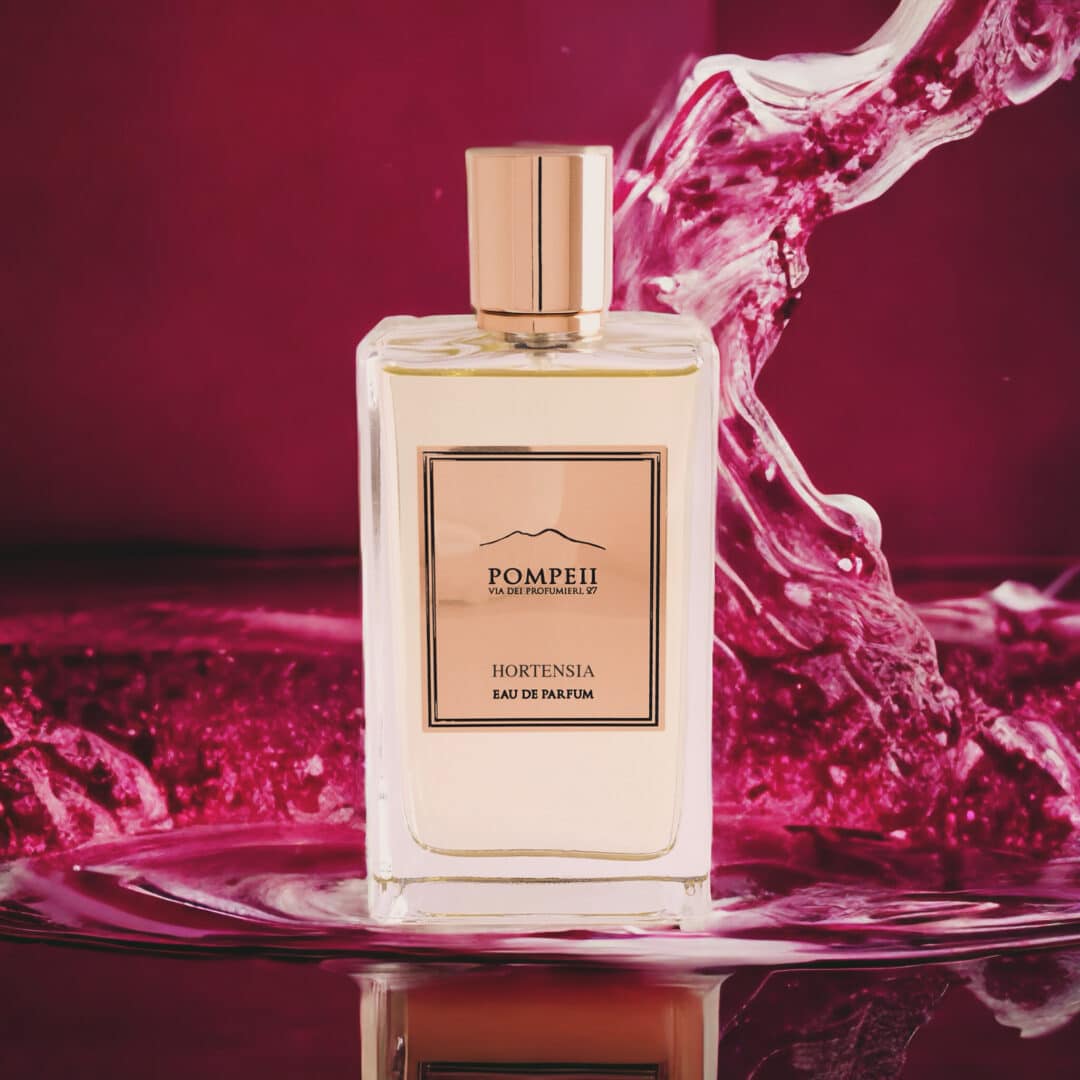I have to admit that one of today’s fragrances has a particularly big name for me: Julia is the first eau de parfum that I’m going to take a closer look at for you today. The second creation is Hortensia, so it also has a woman’s name. What do I expect from the two fragrances? It could be floral compositions. Sweet, possibly a little powdery or gourmand. So far I haven’t tried either of them, so I’m still just as smart as those of you who have yet to get to know the Pompeii brand’s collection.

I have already presented the two eaux de parfum Valeria and Menandro in my article Pompeii – At the foot of Vesuvius, which revolve around a Roman woman of dubious reputation and a very special archaeological highlight in the submerged metropolis near Naples.
Julia – The lucky one
In Pompeii, one of the largest estates belonged to a woman named Julia Felix. Just a stone’s throw from the amphitheater, the area of just under 6000 square meters with its numerous buildings, rooms and gardens is hard to beat in terms of grandeur and luxury. Only 17 years before the catastrophic fall of Pompeii, an earthquake – probably a harbinger of the city’s devastating fate – had caused extensive damage to many houses, which is why a large number of villas and estates belonging to wealthy Pompeians were still being renovated at the time of the eruptions. Meanwhile, the owners of the house lived in other regions and towns and therefore did not fall victim to the volcanic eruption.
It was the same for Julia Felix. Her house was still being renovated in the year of the disaster. Apparently, she rented out residential units and stores within her huge property. The rooms decorated with magnificent murals, the gardens in the inner courtyards and the sophisticated architecture with porticoes, several private and public baths give an idea that Julia Felix was a respected and extremely successful businesswoman and entrepreneur. The fragrance Julia combines the ingredients bergamot, cumin, nutmeg, pepper, cedarwood, rose, vetiver, wood and musk.

Airy, dry and rather tart, Julia starts the fragrance. A subtle pepper spiciness meets spicy, woody nuances, accentuated by tangy, fresh bergamot, which underlines the lightness of the creation. I had expected a lush rose scent from the beginning, perhaps also because of the official press material, but Julia is much more of a lucid, spicy-woody composition in which the rose has more of an underlining function. Powdery, earthy nuances are added in the finish, which I attribute to vetiver and musk.
This Juliet from Pompeii is very bright, flooded with light and transparent. It is not a powerful and penetrating fragrance, even if one might assume this from the source of inspiration of the successful and certainly assertive Julia Felix. The olfactory Julia is rather quiet, delicate, subtly tart and persistent despite the airiness of the creation. A gentle and subtle eau de parfum that should appeal to anyone who prefers light, calm compositions without sweetness. An ever-walker that is suitable for every season and occasion.
Hortensia – The self-confident one
As far as I can tell, the fragrance Hortensia is not dedicated to a real person, but “stands for the emancipated person who has the courage to assert her rights even against the powerful.” There is indeed an orator named Hortensius, who also owned a Villa Hortensia. He was extremely well known in ancient Rome, but died well over a hundred years before the fall of Pompeii and had no real connection to the city. The villa in question was located about 50 km away in a town called Baiae, which was not affected by the eruption of Mount Vesuvius. He had a daughter called Hortensia, who was also an orator – the only one of her family to give public speeches in ancient Rome.
The fragrance Hortensia may have a connection to the above-mentioned people, but perhaps only the name is identical. What I do know for sure is what fragrance notes the eau de parfum contains, namely juniper berries, grapefruit, blackcurrant, clove, leather, black pepper, violet, cedarwood, raspberry, musk and vetiver.

The opening of Hortensia from Pompeii is fruity and sparkling, in which I perceive the tart notes of grapefruit as well as the dark berry nuances of blackcurrant. This composition also reveals a clear dryness, which I would attribute to the pepper and juniper berries. The violet provides delicate powder accents, into which the leather gradually creeps in on quiet soles, bright but without suede nuances. The finish is clean and delicate thanks to cedarwood, musk and vetiver, all of which focus on lucid and powdery notes, sometimes woody, sometimes gently earthy. The raspberry gives the creation a tart, fruity facet.
Hortensia is fruitier and sweeter than Julia, but less tart and less spicy. And yet the two also have a few things in common. They have a very bright, dry note that sometimes seems almost creaky and – in combination with the wood nuances – reminds me of driftwood. I think the pepper plays a role here. Both are transparent, airy and sometimes difficult to grasp, suitable for everyday and office wear and unisex. Hortensia is also perfect for anyone who prefers a more subtle and casual fragrance.

Be First to Comment